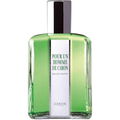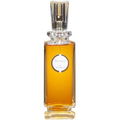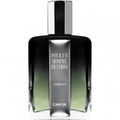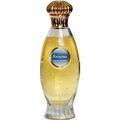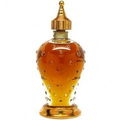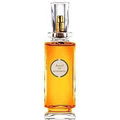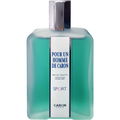06/01/2020

Melisse2
24 Reviews
Translated
Show original

Melisse2
Top Review
36
Carons L'Heure Bleue
Farnesiana was created in 1947 by Michel Morsetti, then Caron house perfumer, who is said to have taken inspiration for it from the notebooks left by Ernest Daltroff.
To what extent the version I describe here, which was re-released in 2017 in what I consider to be an extremely successful series, Collection Privée, differs from the original, I do not know.
Azura has already noted in her statement on "Farnesiana (1947)" that the fragrance in the base of Guerlain's L'Heure Bleue is similar.
I notice this similarity from the beginning. This is because for me both fragrances are primarily balsamic-powdery heliotrope-violet combinations. L'Heure Bleue juxtaposes this waxy powderiness with carnation and aniseed, while in the Farnesiana you can smell mimosa next to heliotrope and violet.
Now this finding makes me insecure. For as clearly as I perceive almond-vanilla heliotrope in both fragrances - it is not mentioned here in any comment or statement so far, neither in L'Heure Bleue nor in Farnesiana and of course it does not occur in the respective pyramids. So am I wrong?
I'm going to walk around blithely and until I am proven wrong, I assume that this is not the case
In the prelude and over the first few hours I find both L'Heure Bleue and Farnesiana to be rather unsweet scents. Besides carnation, bergamot and aniseed, L'Heure Bleue also makes you think of light leather, which I don't notice in Farnesiana. Instead, Farnesiana smells like mimosa - cool, fruity and distantly reminiscent of woodruff.
Here, Farnesiana invokes another caron scent, which also smells of mimosa, "Montaigne (2017) (Perfume)". But while the Montaigne has a fresher, more sparkling mimosa and on top of that an old-fashioned powdery soap, I find the mimosa in the Farnesiana more balsamic, more similar to violet.
In the further course, L'Heure Bleue, to return to the actual comparison, remains unsweet and elegant. Farnesiana becomes sweeter after a few hours. Rivegauche describes his perception at EdP as "almond marzipan vanilla". I can well understand the impression, but I feel this sweet twist is more like the scent of acacia blossoms that are the focus of Caron's "Acaciosa (2017) (Eau de Parfum)".
For me, Farnesiana is an enchanting old-fashioned classic fragrance, which, just like L'Heure Bleue, I still find wearable and not a bit dusty. Unfortunately, like the other fragrances from "La Collection Privée", it has been discontinued after the takeover of Caron by the new owners.
I hope this is just the calm before the storm and they are planning an (even better?) new edition of the Caron classics. In terms of time, however, hardly a year would have been better suited for this than the 100th anniversary of the most famous Caron fragrance "Tabac Blond (perfume)", which was not only let pass unused in 2019. But at the end of which (from November) this classic was no longer available either.
To what extent the version I describe here, which was re-released in 2017 in what I consider to be an extremely successful series, Collection Privée, differs from the original, I do not know.
Azura has already noted in her statement on "Farnesiana (1947)" that the fragrance in the base of Guerlain's L'Heure Bleue is similar.
I notice this similarity from the beginning. This is because for me both fragrances are primarily balsamic-powdery heliotrope-violet combinations. L'Heure Bleue juxtaposes this waxy powderiness with carnation and aniseed, while in the Farnesiana you can smell mimosa next to heliotrope and violet.
Now this finding makes me insecure. For as clearly as I perceive almond-vanilla heliotrope in both fragrances - it is not mentioned here in any comment or statement so far, neither in L'Heure Bleue nor in Farnesiana and of course it does not occur in the respective pyramids. So am I wrong?
I'm going to walk around blithely and until I am proven wrong, I assume that this is not the case
In the prelude and over the first few hours I find both L'Heure Bleue and Farnesiana to be rather unsweet scents. Besides carnation, bergamot and aniseed, L'Heure Bleue also makes you think of light leather, which I don't notice in Farnesiana. Instead, Farnesiana smells like mimosa - cool, fruity and distantly reminiscent of woodruff.
Here, Farnesiana invokes another caron scent, which also smells of mimosa, "Montaigne (2017) (Perfume)". But while the Montaigne has a fresher, more sparkling mimosa and on top of that an old-fashioned powdery soap, I find the mimosa in the Farnesiana more balsamic, more similar to violet.
In the further course, L'Heure Bleue, to return to the actual comparison, remains unsweet and elegant. Farnesiana becomes sweeter after a few hours. Rivegauche describes his perception at EdP as "almond marzipan vanilla". I can well understand the impression, but I feel this sweet twist is more like the scent of acacia blossoms that are the focus of Caron's "Acaciosa (2017) (Eau de Parfum)".
For me, Farnesiana is an enchanting old-fashioned classic fragrance, which, just like L'Heure Bleue, I still find wearable and not a bit dusty. Unfortunately, like the other fragrances from "La Collection Privée", it has been discontinued after the takeover of Caron by the new owners.
I hope this is just the calm before the storm and they are planning an (even better?) new edition of the Caron classics. In terms of time, however, hardly a year would have been better suited for this than the 100th anniversary of the most famous Caron fragrance "Tabac Blond (perfume)", which was not only let pass unused in 2019. But at the end of which (from November) this classic was no longer available either.
33 Comments





 Top Notes
Top Notes  Mimosa
Mimosa Bergamot
Bergamot Heart Notes
Heart Notes  Iris
Iris Lily of the valley
Lily of the valley Base Notes
Base Notes  Vanilla
Vanilla Ylang-ylang
Ylang-ylang


